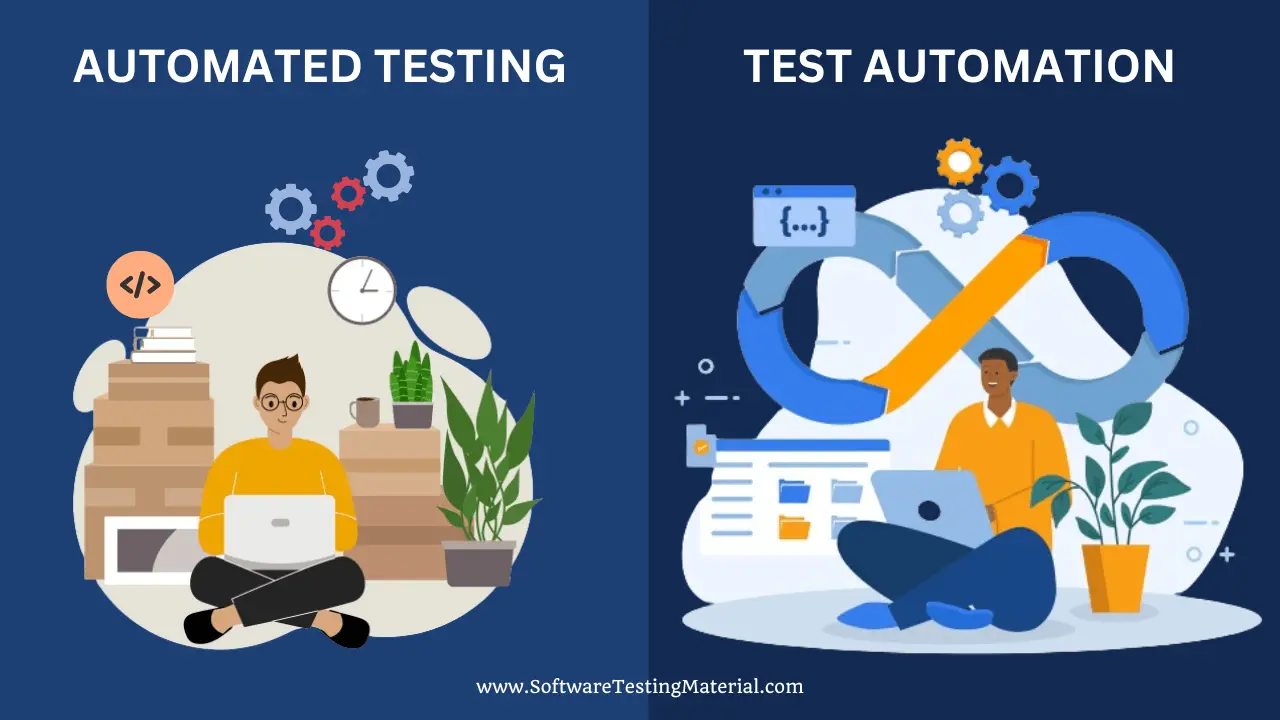Automated Testing Vs. Test Automation | You Should Know
Actually, when it comes to discussing automated testing vs. test automation, there are some practical differences.
When it comes to software testing, people often use the terms “automated testing” and “test automation” interchangeably.
While it might just seem like two different ways to say the same thing, the terms Automated testing and Test automation have their own specific meanings and purposes.
It’s important to understand the differences between them.

This blog post aims to provide a clear explanation of the distinctions between the two and clear up any confusion surrounding them.
What is Automated Testing
Automated testing refers to the process of executing targeted tests through automation such as a predefined set of regression tests, instead of executing them manually. This approach enhances efficiency, accuracy, and consistency while minimizing human error.
When you run a suite of unit tests on your development machine, you’re basically doing automated testing. And, when the CI server runs all the unit and integration tests after receiving new commits, it’s also doing automated testing.
Developers are the ones who really benefit from this approach.
Must read: Automation Testing Tutorial
What is Test Automation
Although automated testing involves the execution of automated tests, the concept of “test automation” is much more comprehensive in scope.
Test automation refers to fully automating the process of tracking and managing testing requirements within an organization.
The entire organization benefits from this approach with a special focus on the DevOps professionals.
Must read: Agile vs DevOps
Automated Testing Vs. Test Automation
| Aspect | Automated Testing | Test Automation |
|---|---|---|
| Definition | Automated testing involves executing specific tests using automation tools, usually to validate the software code. | Test automation encompasses the broader process of automating the tracking and management of all testing requirements, beyond just executing the tests. |
| Primary Beneficiaries | Primarily benefits developers by allowing them to quickly check if their code changes work as intended without manual testing. | Benefits the entire organization by ensuring that testing processes are efficiently managed and integrated into the software development lifecycle. |
| Scope | Limited to the execution of tests. | Encompasses the entire testing process, including planning, execution, tracking, and reporting. |
| Objective | To verify the correctness of the software being developed through automated means. | To streamline and enhance the efficiency of the testing process through automation, facilitating a more organized and effective testing strategy. |
| Impact on DevOps | Crucial for supporting continuous integration and delivery by allowing rapid testing of code changes. | Plays a pivotal role in the continuous development/continuous deployment pipeline by ensuring that testing is not a bottleneck in the software delivery process. |
Benefits of Automated Testing & Test Automation
- Test automation and automated testing can be a time-saving solution for organizations looking to improve their software development process and deliver quality applications more quickly.
- Additionally, test automation helps reduce costs associated with manual testing while also providing better ROI by expediting the development cycle.
- Test automation and automated testing can be a great way to ensure that the quality of your product is at its best and that it meets all customer expectations.
- Ultimately, test automation and automated testing are effective tools for organizations striving to develop reliable, high-quality applications in a timely manner.
Conclusion
Automated testing is crucial in software development, particularly for empowering developers to refactor their code with confidence. This leads to the creation of better-quality code, ensuring better performance and reliability.
However, the significance of test automation becomes even more crucial when a company adopts a continuous development/continuous deployment approach. By implementing test automation, organizations can seamlessly thrive in the dynamic DevOps world, enabling faster and more efficient software delivery while maintaining the highest standards of quality assurance.
In conclusion, both Automated testing and Test Automation are crucial for the success of a software organization.
Related posts:
- Automated Testing Vs. Manual Testing
- Software Development Lifecycle Vs. Software Testing Lifecycle
- Software Testing Tutorial (Free Software Testing Course)
- Manual Testing Interview Questions
- 100+ Types of Software Testing
- Software Development Life Cycle (SDLC) – Complete Guide
- Software Testing Life Cycle (STLC) – Complete Guide
- Bug Life Cycle (Defect Life Cycle) – Complete Guide
- When and how we do Regression Testing in Software Development
- When we do Retesting in Software Development
- Software Testing Tools
- Prompt Engineering In Software Testing
- How To Become A Prompt Engineer (Step By Step Guide)
- 30+ Prompt Engineering Interview Questions
- Artificial Intelligence In Software Testing
- What is AI Testing | Everything You Should Know






